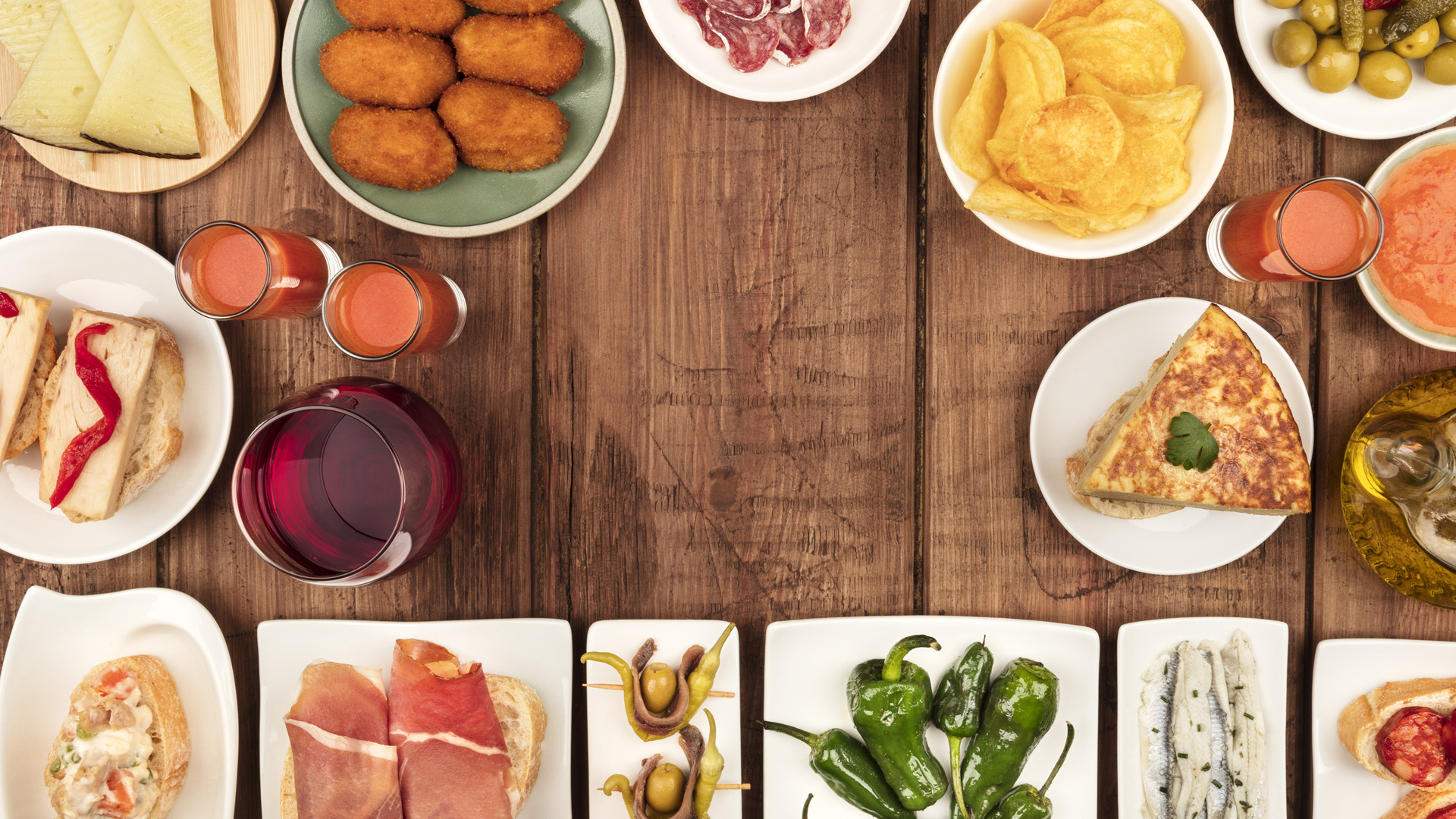Spain is a great example of the mediterranean diet and the food is very different from Mexican food available in the US. Galicia, the region where Santiago is located, has coastline both on the Cantabric sea and the Atlantic ocean, so as you would expect, seafood is a staple in this area.
During your Camino visit you will enjoy the typical octopus ("pulpo a la gallega") accompanied by potatoes, sprinkled with paprika and generous amounts of olive oil. Not only is it favored by the inhabitants of the region but people from the rest of Spain come to Galicia to enjoy the true pulpo as well. It can be found at many establishments along the Camino and towns nearby. Along with the octopus, which is worth trying, there is an unending variety of seafood staples like the scallop varieties vieiras and zamburiñas.

Octopus (Pulpo a la Gallega)
Interestingly enough, seafood does not necessarily dominate the menu. Galician steak (ternera gallega) has a great reputation all over Spain, so if meat is your preference you have come to the right place. Another typical dish of the region to consider is the delicious raxo (pork loin) marinated for hours and often served with potatoes.

Tuna Pie (empanada gallega)
Finally, Spain is the well known land of tapas. Served with any drink order, you will find small plates of food that allow you to sample many different flavors from the region. From the famous cheeses of the Arzúa region to the typical Galician empanada (tuna pie), there is a lot of variety for you to sample along your way.
Among these, the pimientos de Padrón native to the region are also recommended. They are fried in olive oil and sprinkled with salt and served hot. An extremely flavorful pepper, it has the curiosity that about one in ten is also spicy which works as a nice surprise when you put it in your mouth.
Given the amount of hikers that pass through the area during their Camino trips, the villages are set up to provide for the visitors. Meals are usually three courses (first, second and dessert) to help the pilgrims recover their strength to continue on their way. If you are not persuaded to try the Spanish staples described here, there are options for those looking for more traditional fare. However, most villages are small in size so you should not expect the variety of a large town.
Want to know more about the food on our tours? Feel free to browse through our self-guided and guided tours. Make sure you also read the recommendations on our two blog articles about what food to eat and what food NOT to eat on el Camino!

